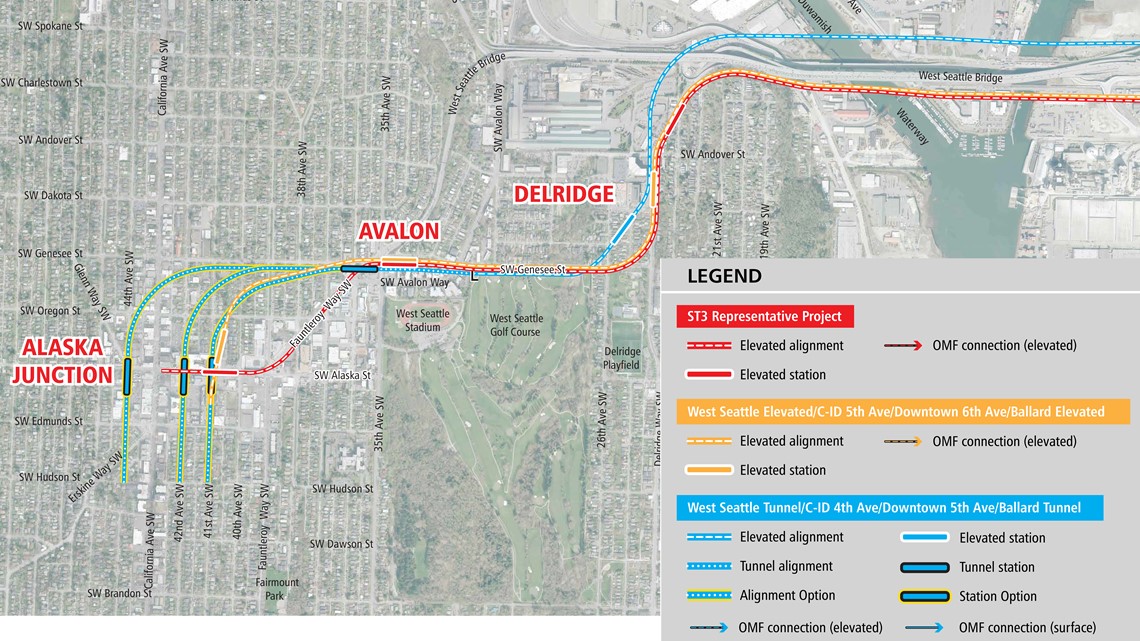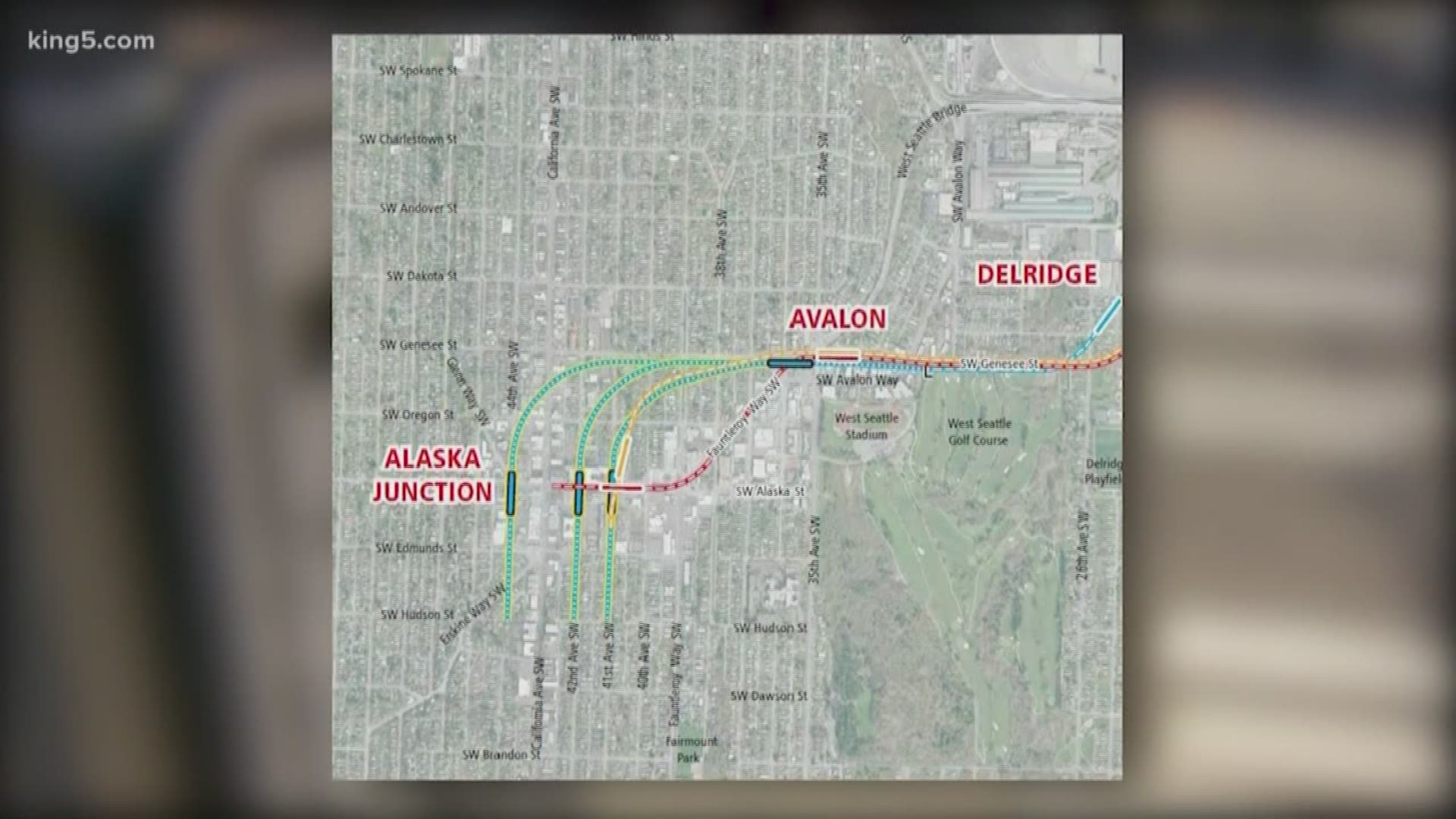SEATTLE — Sound Transit is eyeing elevated lines and stations as the preferred option to study in the West Seattle and Ballard light rail expansion project if the agency doesn’t receive additional third-party funding.
If Sound Transit did get more funding, it would prefer to build tunnel stations in both neighborhoods.
However, that would mean coming up with money above and beyond the $5 billion estimate to build the lines. It would cost $700 million more than the project estimate to tunnel in West Seattle and an additional $350 million to tunnel in Ballard, according to a Sound Transit spokesperson.
Sound Transit’s board approved a motion Thursday authorizing the agency to move forward with a draft environmental impact statement that will study each option along with other alternatives along the expansion route. However, the agency won’t choose a final route until the final environmental impact statement is analyzed in 2022.
On the West Seattle section, the preferred option for a light rail line would run west to an Avalon station near Southwest Genesee Street, Southwest Avalon Way, and 35th Avenue Southwest. It would then turn southwest on Fauntleroy Way Southwest towards the Alaska Junction station near 41st Avenue Southwest and 42nd Avenue Southwest.


In Ballard, the preferred line would emerge from the downtown tunnel east of the BNSF railroad tracks to a Smith Cove station between West Galer Street and the Magnolia bridges. An Interbay station could be on Thorndyke Avenue West north of West Dravus Street.
From there, the preferred line without third-party funding would cross Salmon Bay on a fixed bridge east of the Ballard Bridge and continue to Ballard station on 14th Avenue Northwest via an elevated railway. The Ballard station would be located on Northwest Market Street.


In April a group of elected leaders, including Seattle Mayor Jenny Durkan, King County Executive Dow Constantine and several city council members, signaled broad support for the tunnel option to Ballard and West Seattle.
Some West Seattle residents also voiced concerns about the elevated rail, saying it would run through a residential area.
The Ballard and West Seattle projects will add 11.8 miles of light rail and are expected to open in 2035 and 2030, respectively.

